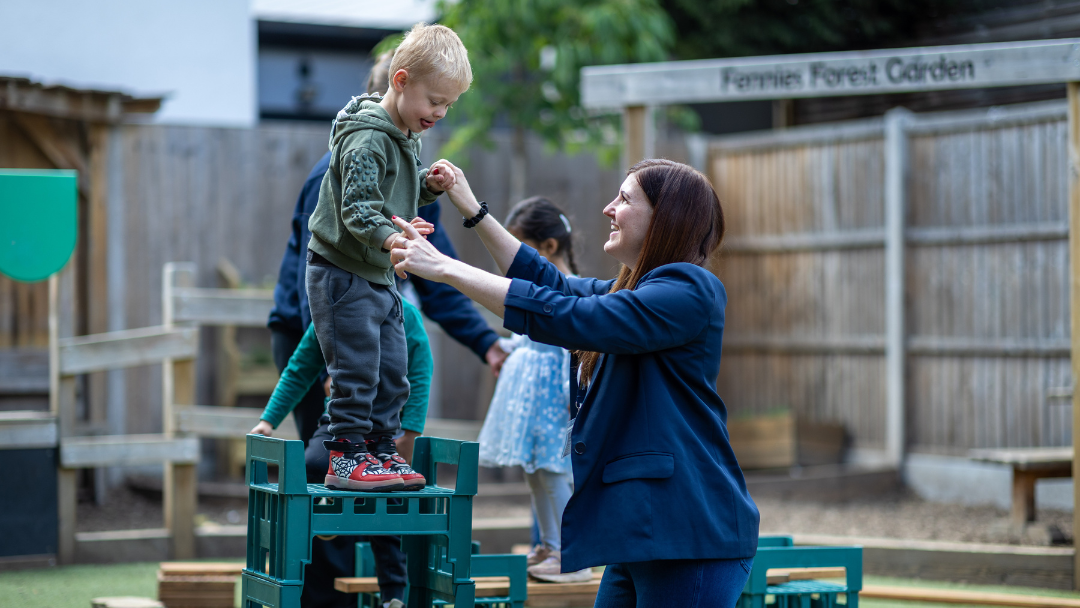Our Education Advisor, Ruth, runs through what considerations there are for choosing a book for your child.
When I look back to reading stories with my children and the children I read and tell stories to at Fennies, I am often drawn back to titles that are almost universally popular.
What makes these books firm favourites with children?
Illustrations & Great Characters
Stories that engage children often have bright inviting illustrations, a main character children can connect with or feel excitement in their dilemmas! Often classic children’s books have an animal in dilemma (think of the mouse in “The Gruffalo”) or a superhero (super Daisy / Supertato stories spring to mind). Children also enjoy imaginary characters mythical beasts and the ever-popular traditional tales such as Goldilocks and the Three Bears.
Rhyme & Alliteration
Books that add an element of rhyme or alliteration are always a favourite of mine as these are important stepping stones in children’s foundations for literacy. Children’s books also often contain a repetitive theme, an element of anticipation, add a protagonist and a villain and you have the perfect ingredients for an engaging story.
Loved By You
If we think about choosing books for ourselves to read, we often want similar things. These books will become the favourite bedtime read of many children, and you will find that these well-loved stories are the ones you read over and over again. Your child will soon learn these stories by heart and will know if you try to skip a page!They recognised how important Early Years Education was and I am convinced it has played a key role in my being a creative adult. It has given me the confidence to carve out a career in Art – creating it as a practising Artist as well as sharing my knowledge as an Educator.As the name suggests, the difference between product and process art is that the former focuses on the end-result (how the art should look!), while the latter focusses on the magic that occurs in the time that is spent creating the art.

Using stories to promote simple comprehension
We can ask older children questions such as what do you think will happen next? I wonder why….? What do you think he/she/they should do? As children increase their attention span they will be able to listen to longer stories and enjoy more complex story lines therefore, ensuring the book you choose is age appropriate is very important.Include non-fiction books in your child’s literary diet Also, find picture books about topics or themes that interest them. Books with simple facts about animals, weather, bugs, dinosaurs, and life cycles are among the ones we use in the nursery. These books encourage questioning and help to extend children’s knowledge and vocabulary.
What about babies and toddlers?
Babies love snuggling up close with you and listening to the sound of your voice. Newborn babies in particular often love contrast images such as black-and-white patterns. As they get a little bit older, they’re likely to be fascinated by photos of other babies and gentle rhymes.Toddlers are often getting better at using their hands, so they’ll love board books with flaps and trying to turn the pages. The vocabulary and content should reflect your child’s age.Choosing suitable books for babies and toddlers helps if they have simple illustrations which they are familiar with i.e. animal names, cars, cups, teddy with a few words on each page, at this stage we are encouraging children’s communication and language development by making sounds, responding as they create their sounds (babbling) and using simple one-word interactions which build to adding extra words ie. “Cat”… “big cat”. For practicality, board books are more appropriate at this stage as paper copies will get torn and chewed! Having sound buttons or flaps also adds a fabulous element of engagement.

How often should I read to my child?
Parents will ask me ‘How often should I read to my child?’ My answer is always the same…every day! In an age where children as young as two are fed a diet of fast-paced images, videos, and clips and spending more and more time in front of a screen this has in my opinion never been more important. The more time we spend with our children, babbling, chatting, singing, making up rhymes, and telling stories the better.We are told that 5 fruit and veg a day is a great healthy option, I say include 5 stories and rhymes a day too! Owning a library card and visiting your local library is also something I would recommend; children can then get the opportunity to experience a wide variety and styles of books. Libraries give children a choice which is also very important, I have found many a gem at the library that became a favourite of my children, and having six new books every week saves the cost of buying brand new books.

My favourite books for children
To limit my favourite children’s storybooks to ten has been very difficult, but here goes...
Babies and toddlers:
Dear Zoo by Rod CampbellNoisy Farm Rod CambellWhere’s Mr Lion? By Ingela ArrheniusSo Much by Trish Cooke
2 years and upwards:
The Very Hungry Caterpillar by Eric CarleThe Gruffalo by Julia DonaldsonSupertato by Sue HendraOi Frog by Kes GrayWe’re going on a bear hunt by Michael RosenNot a box by Antoinette PortisHanda’s Surprise by Eileen Brown
Along with these titles, I would add a healthy amount of Traditional tales;
Goldilocks and the Three BearsThe three little pigsBilly goats GruffThe gingerbread man
Subscribe to our newsletter
Stay up to date with Fennies news








.png)

